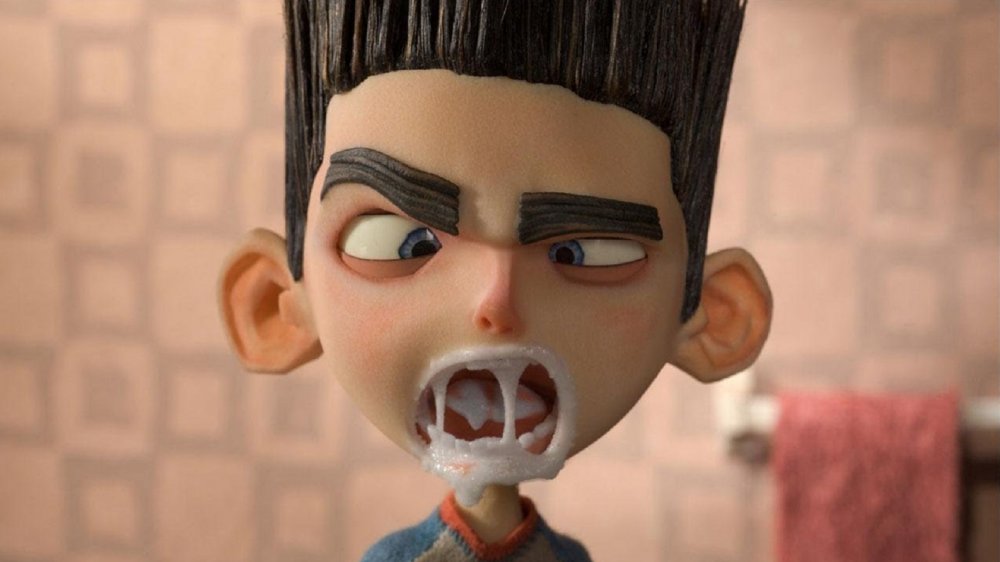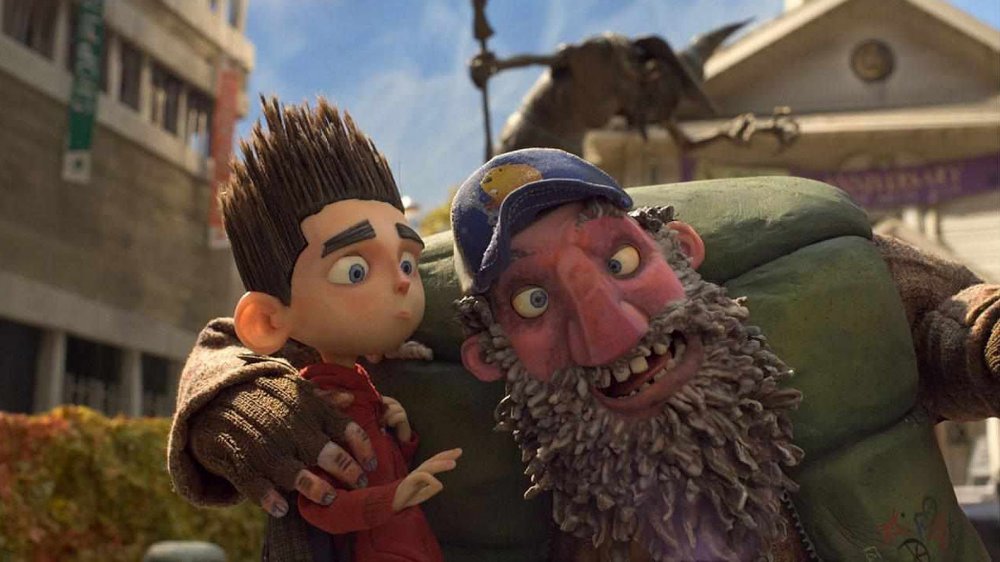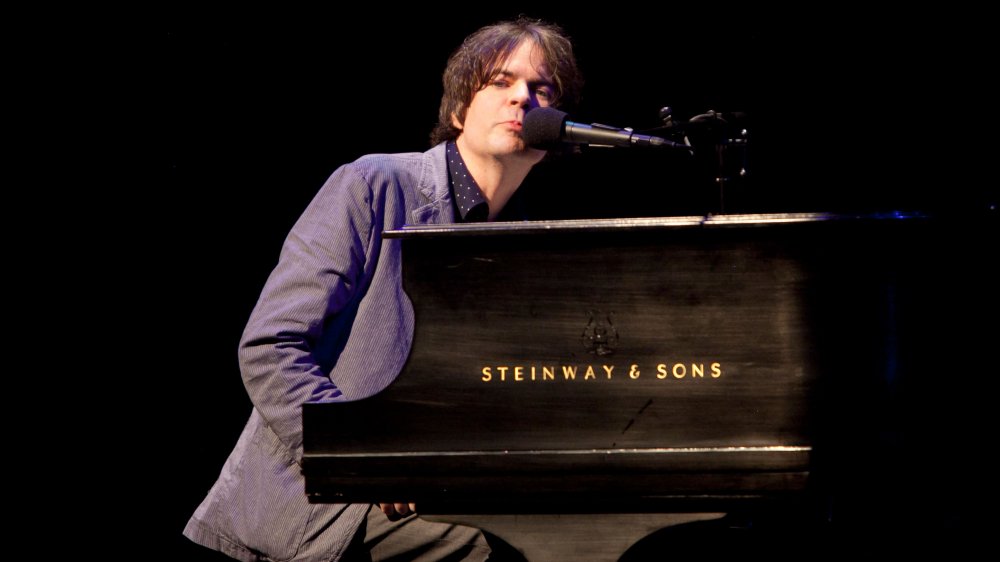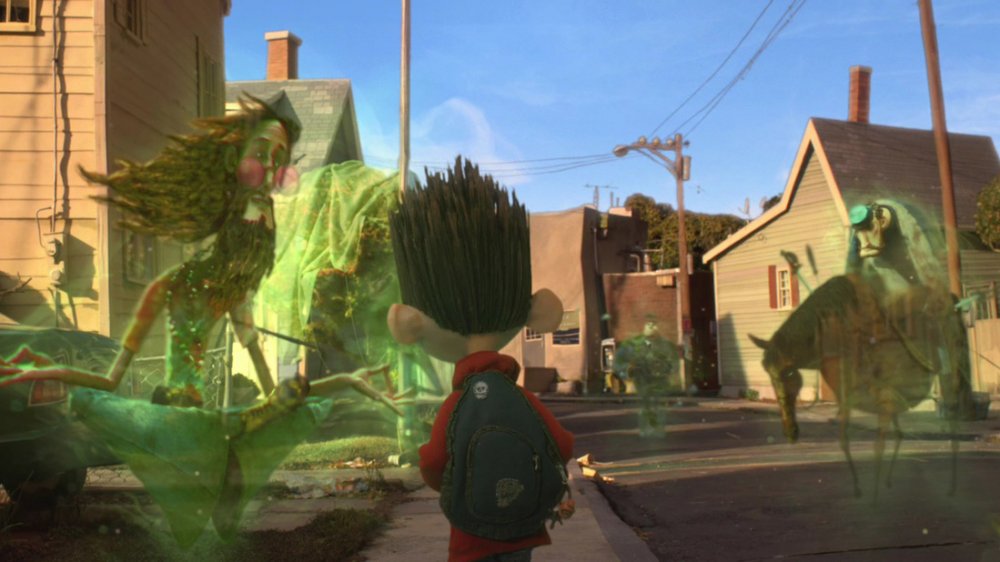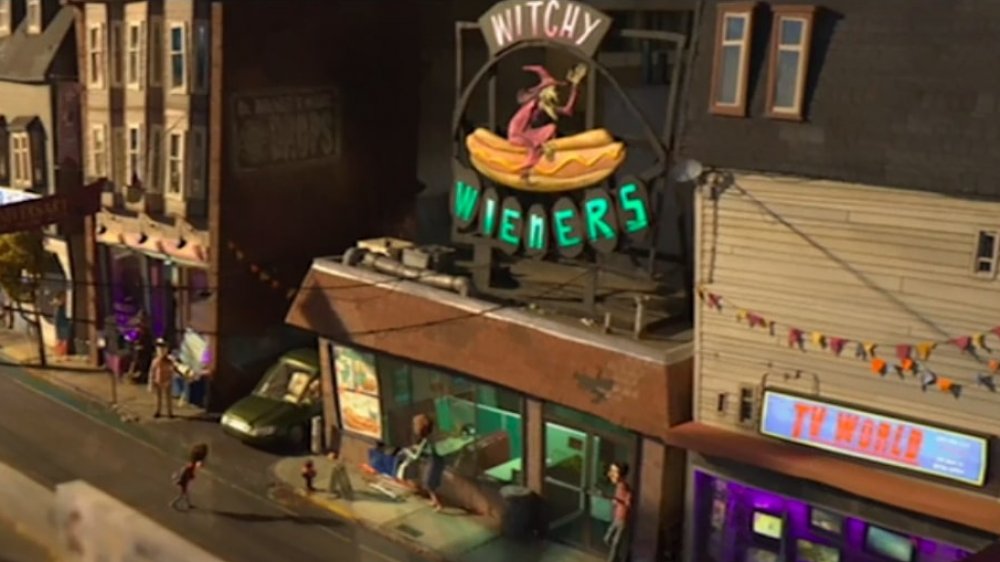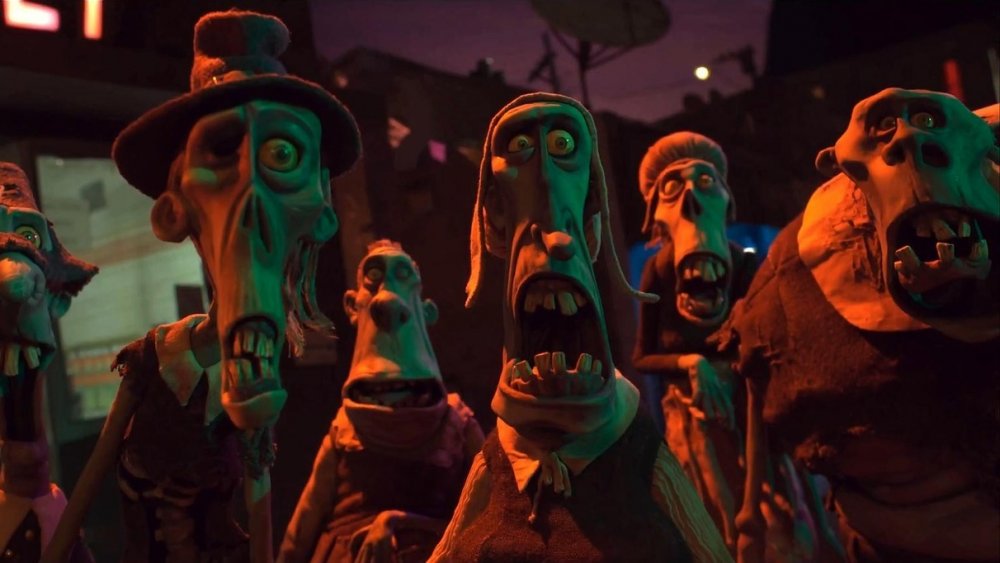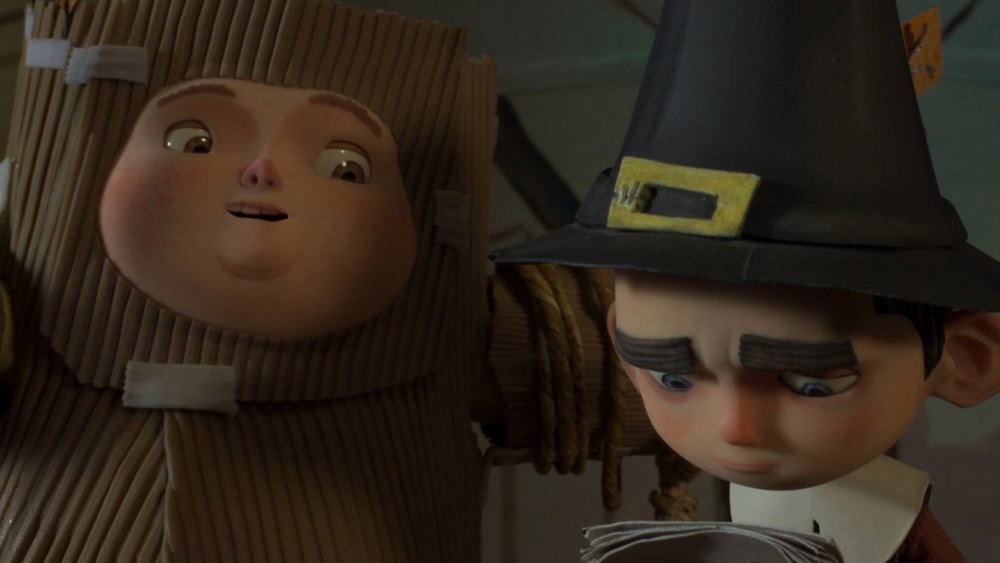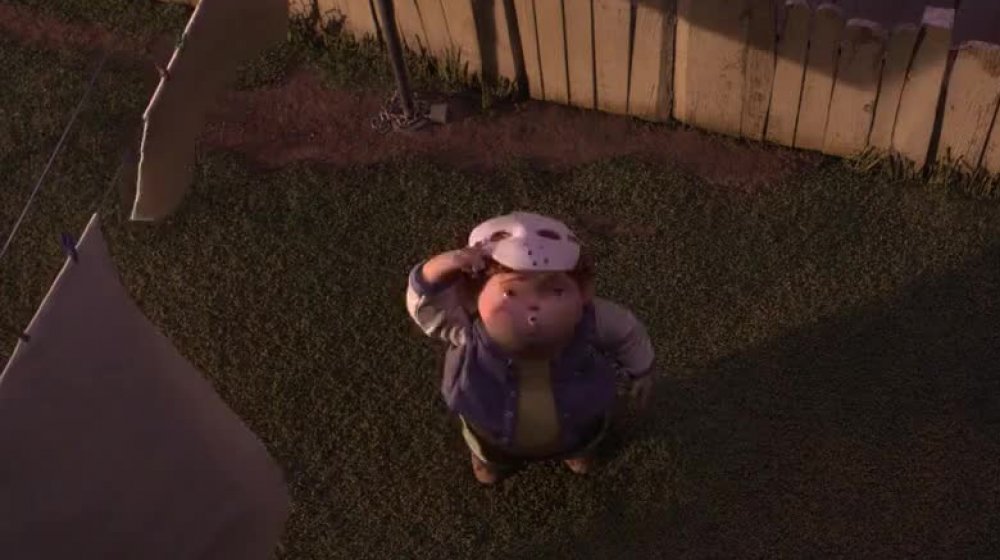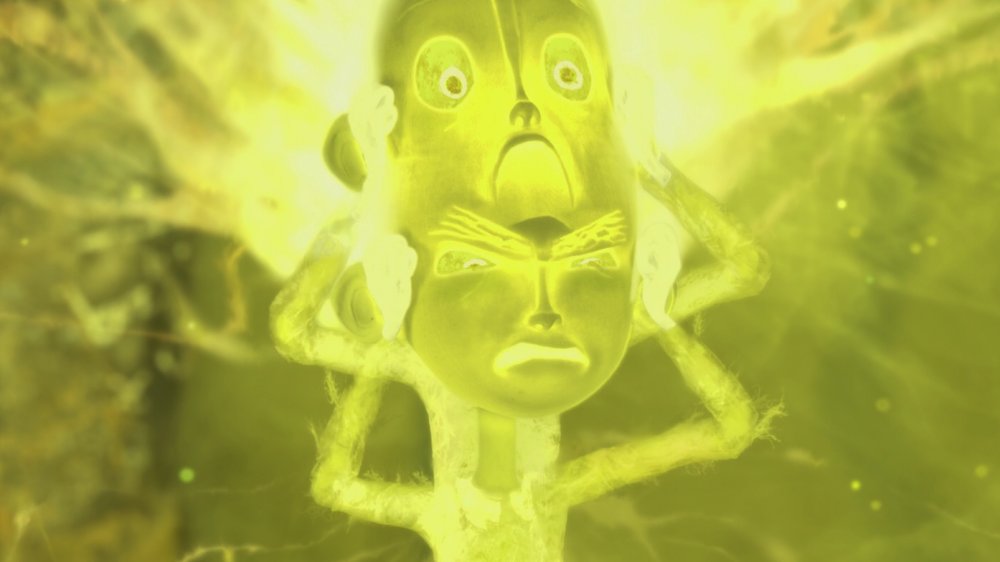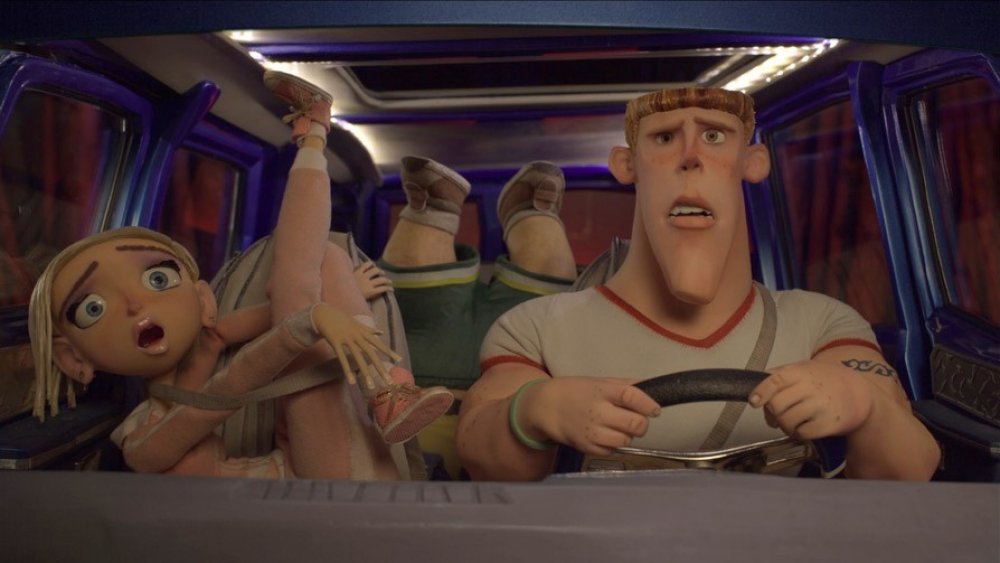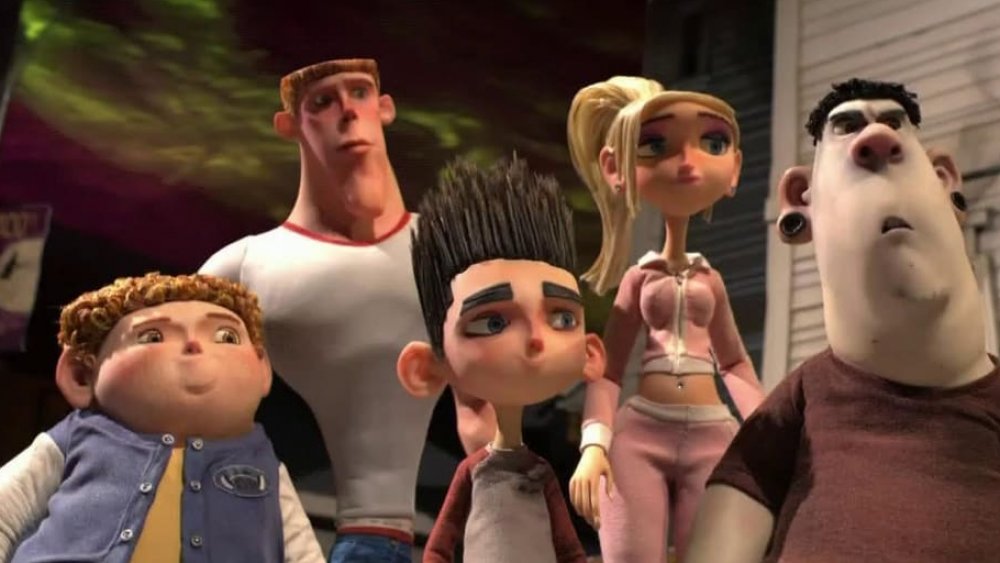Things Only Adults Notice In ParaNorman
After the critically acclaimed release of their feature film debut, Coraline, Oregon-based animation studio Laika quickly became known as the premier US stop-motion house for smart, spooky, engaging family entertainment, told with a hand-crafted style and a complex intellect. Their films largely focus on young kids facing their fears against, and often alongside, supernatural elements, whether in the eerily comic The Boxtrolls or the emotionally gripping Kubo and the Two Strings. And then there's their follow-up to Coraline, 2012's hauntingly resonant ParaNorman. It's the story of Norman, a young boy whose gift of speaking to the dead becomes the only hope of protecting his hometown from a witch's cruse.
With ParaNorman, Laika locked down the tools to make animated entertainment that enlightens and entertains simultaneously. But, as with any film aimed at younger audiences, there are usually aspects to the production, story, and characters that go over the heads of younger viewers — details that are telegraphed, intentionally or otherwise, to the adults in the room. From behind-the-scenes factoids and spooky Easter eggs to familiar actors bringing this world to life, it's time to take a look at the things only adults notice in ParaNorman!
ParaNorman's cast is absolutely stacked
It's become the (para)norm these days for animated films to stack their casts with as many recognizable celebrity voices, no matter how well-suited they are for the story they're telling. But Laika, from project to project, has been able to have the best of both worlds. Their characters are voiced by familiar actors, who are also equally matched to the strange and one-of-a-kind characters they've been cast to play. For proof, look no further than ParaNorman.
While Norman himself was voiced by relative newcomer Kodi Smit-McPhee (known up until that point for starring in The Road and Let Me In but better known these days for playing Nightcrawler in the X-Men series), the rest of the cast was filled with a litany of character actors and masterclass performers who rose to the challenge of their respective roles. There was Jeff Garlin playing Norman's exasperated father, Elaine Stritch as the ghost of Norman's grandmother, and even McLovin himself, Christopher Mintz-Plasse, played against his usual nerdy type to portray Norman's bully, Alvin. Throw in Anna Kendrick, Casey Affleck, Leslie Mann, and John Goodman, and you've got a murderer's row of talent who brought this charming story to sterling life.
ParaNorman boasts an impressive composer
When thinking of contemporary film composers who bring a distinctive sound to whatever film they journey to, it's hard not to escape the sounds of critically acclaimed indie composer Jon Brion. Primarily known for his early collaborations with Paul Thomas Anderson, as well as his masterful production work on Kanye West's sophomore album "Late Registration," Brion eventually became one of the go-to composers for filmmakers looking to add a sense of pop ennui into the worlds of their movies.
In other words, he was the perfect pick to write the score for ParaNorman. As of this writing, this is Brion's only foray into the world of animation, and his work here is one of the key elements of what makes this film so special. His ear for hopeful melancholy is a perfect match for Norman and the otherworldly adventure he embarks on, and his work satirizing the musical tropes of '70s and '80s horror movies works wonders here, too. Though this is his only animated outing, Brion's work absolutely shines in bringing the world of ParaNorman to a grand musical life.
All those ghosts are from different eras
Things start to seem a bit off when Norman tells his family that he was just talking with his grandmother ... who we soon discover is actually dead, a little detail that raises even more questions. But Norman's gift for speaking with those beyond the grave truly comes to light on his walk to school, where we see a street filled with spirits with unfinished business, greeting Norman along the way.
Not only are there a multitude of ghosts, but we get a fun look at various ghosts from all walks of life throughout history. We get a hippie ghost floating by in the breeze, a Civil War soldier saluting Norman, a 1950s greaser-type fellow, an unlucky gangster who seems to be sleeping with the fishes, and even someone who may or may not be Amelia Earhart stuck in one of the many trees of Blithe Hollow. Adults will definitely appreciate all these ghostly gags, and it's a fun, creative way of showing us the bright side of Norman's gift before things start to get worse.
Adults will definitely notice those witch-themed stores
As befits a town that's most famous for a witch's curse, the culture of Blithe Hollow is absolutely baked in the history of the Witch's Curse, and that also applies to the town's stores and architecture. These devilish details are layered into the very essence of the film itself, and you might want to hit that pause button so you can get a closer look at the specific witchy puns that have infiltrated Blithe Hollow.
A keen eye will notice many of the witch-themed stores that fill the streets of Blithe Hollow. For example, we've got Witchy Weiners, Bewitched in Blithe, Witch Flix, and Witch's Kitchen, just to name a few. Some towns seem to go completely overboard on capitalizing on their history, and Blithe Hollow is certainly not averse to that in any way, as evidenced by these ghoulish Easter eggs.
Blithe Hollow has a lot in common with Salem
The crux of ParaNorman's story — as well as the story of the film's location, Blithe Hollow — is steeped in the legend of a witch who was condemned by the locals centuries ago for trying to place a curse on everyone within the town's confines. But while the town of Blithe Hollow is nothing more than a fiction created for the movie, more history-adept viewers will know that the genesis of Blithe Hollow's backstory is steeped in a terrible truth.
With Blithe Hollow being based in Massachusetts, it's not hard to see the parallels to the Salem Witch Trials — similarly based in Massachusetts — where colonial fear-mongering citizens accused more than 200 people of "witchcraft." Tragically, by the time it was all done, 20 had been executed. The baseless mob mentality of these accusations has been brought up throughout history as a parable for the dangers of baseless accusations and, more importantly, the fear of the "other," a theme that ParaNorman explores head-on in its narrative.
Adults will notice that creepy musical cue
Sometimes the "on-the-nose" choice is the right choice to make. So seems to be the case with the annual school play written and directed by the garishly theatrical drama teacher, Mrs. Henscher (voiced by Alex Borstein), crudely theatricalizing the centuries-ago events that led to Blithe Hollow's annual tradition of honoring those who put the cursed witch to rest.
For the school play — captured by an endless ocean of parental video cameras — not only are we treated to a lovingly, if poorly acted, rendition of this event, but the show starts with the students singing a charmingly off-key rendition of the hit Donovan song "Season of the Witch," a song that's been covered previously by Julie Driscoll, Al Kooper, and Dr. John, and even as recently as Lana Del Ray's cover for the 2019 film Scary Stories to Tell in the Dark. It's a song that hits maybe a little too close to home for this story, but that's just Mrs. Henscher's artistic instincts for you.
ParaNorman has plenty of shout-outs to classic horror films
Much of ParaNorman's aesthetic, both from a visual and auditory perspective, is indebted to the history of horror cinema, from the frequent jump scares and haunting music to the general look of the zombies and color palette employed to tell this story. But outside of the below-the-surface details, the filmmakers threw in some fun "blink-and-you'll-miss-them" odes to some of the more notable horror movies out there.
For example, Norman's room is covered wall to wall with horror themed posters, most of them fake, but lying on his bedroom floor is a particularly eye-catching fake board game — Hands of Fate. It's a nod to the infamous so-bad-it's-good horror movie Manos: The Hands of Fate. This is quickly followed by the reveal that Norman's cell phone ring is the theme from Halloween, as well as the fun visual gag of Neil (Tucker Albrizzi) waiting outside to play hockey, wearing the infamous "Jason" hockey mask from the Friday the 13th films. There's not a horror movie reference too big or too small to cram into the world of ParaNorman.
How they created Agatha Prenderghast
Among the many animated marvels of ParaNorman is the unveiling of the final form of Agatha Prenderghast (Jodelle Ferland), the young girl murdered for witchcraft in the town of Blithe Hollow many centuries ago. Her final form in the film is an animation marvel. It's a floating mix of yellow light stemming from the body of Agatha, with her form taking on multiple dimensions, often appearing with multiple faces at the same time and creating a terrifying foe for Norman to face off against near the end of the film.
It's not only a visual feast, but creating this image was an absolute technological marvel. The final form of Aggie was the result of a complex combination of stop-motion imagery, hand-drawn animated elements, and additional computer-generated imagery all mixed together painstakingly by a passionate team of animators to create a visually phenomenal specter of pain, fear, and calamity that serves as the perfect centerpiece for the film's final climactic battle of emotions.
ParaNorman has one of the first openly gay characters in a mainstream animated movie
Even in a world as wonderfully diverse as ours, it seems like an uphill battle to see that world properly represented in films and television, let alone the entertainment aimed at younger viewers. But over the past decade, larger representation across the various platforms of entertainment has thankfully become more visible, both on-screen and behinds the scenes in the area of creative staffing. And back in 2012, ParaNorman took a tiny step towards seeing the larger world represented on screen when, near the end of the film, it's revealed that Mitch (Casey Affleck), in an almost throwaway moment, is gay.
Frequently cited as the first openly gay character in an American animated movie, part of what makes this moment work so well is how casual Mitch's sexuality fits into the world of ParaNorman, a detail that completely checks out with how his character functions in the larger narrative but something that never verges on the edge of being stereotypical or the butt of any jokes. If anything, the reveal at the end is more of a joke on Courtney (Anna Kendrick) for not even questioning that Mitch might not be interested in her, making one small step for a larger spectrum of representation in our entertainment.
ParaNorman has a pretty important message
Ideally, the core message of ParaNorman is something that will speak to kids directly and that they can pick up on easily, but perhaps the greater hope is that the grown-ups watching alongside their kids will be able to absorb the film's ultimate message, one that speaks directly to how adults too often resort to fear and ignorance when handling scary situations in their life.
While his uncle, Mr. Prenderghast (John Goodman), has been successful at keeping the ghost of Agatha at bay all these years, the ghost is still around, meaning that she still has business yet to be resolved. It's only when Norman, with his youthful spirit and mind free of ignorance and hate, is able to assess the situation, he sees that the only way to truly make things right is not to act out of fear but out of compassion, understanding, and consideration for those around him, especially those who are scared themselves. It's a lesson that's ultimately the saving factor of the film and one that's hopefully able to transcend the story and impact the lives of adult viewers and young viewers alike.
